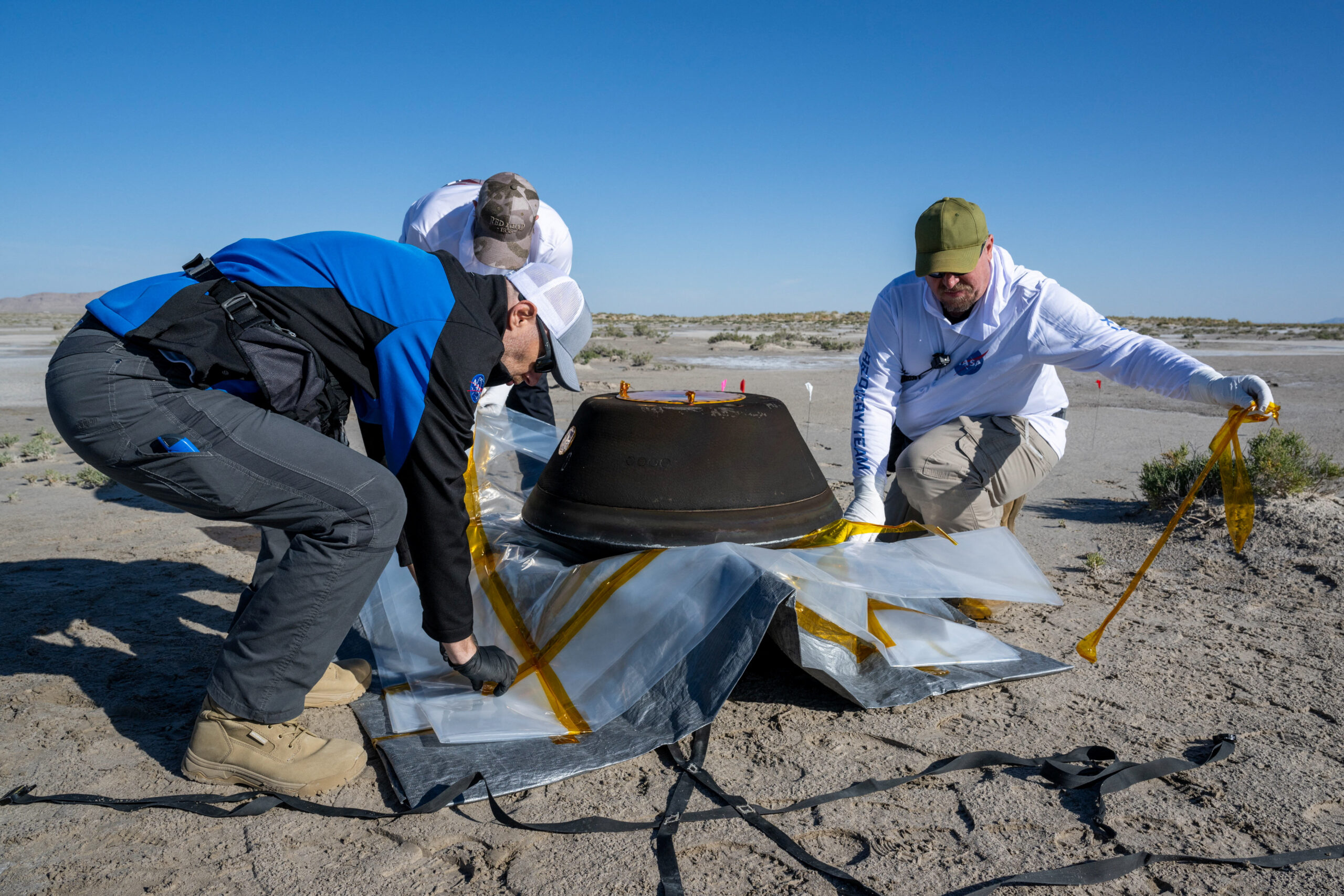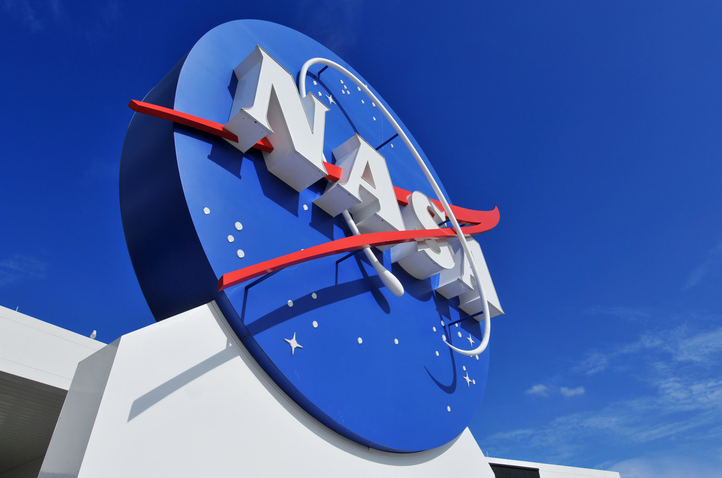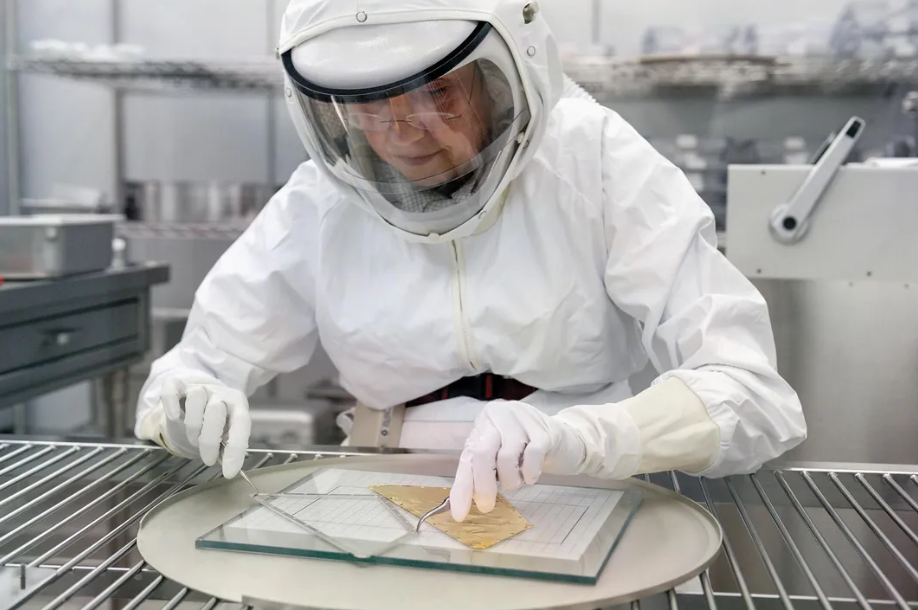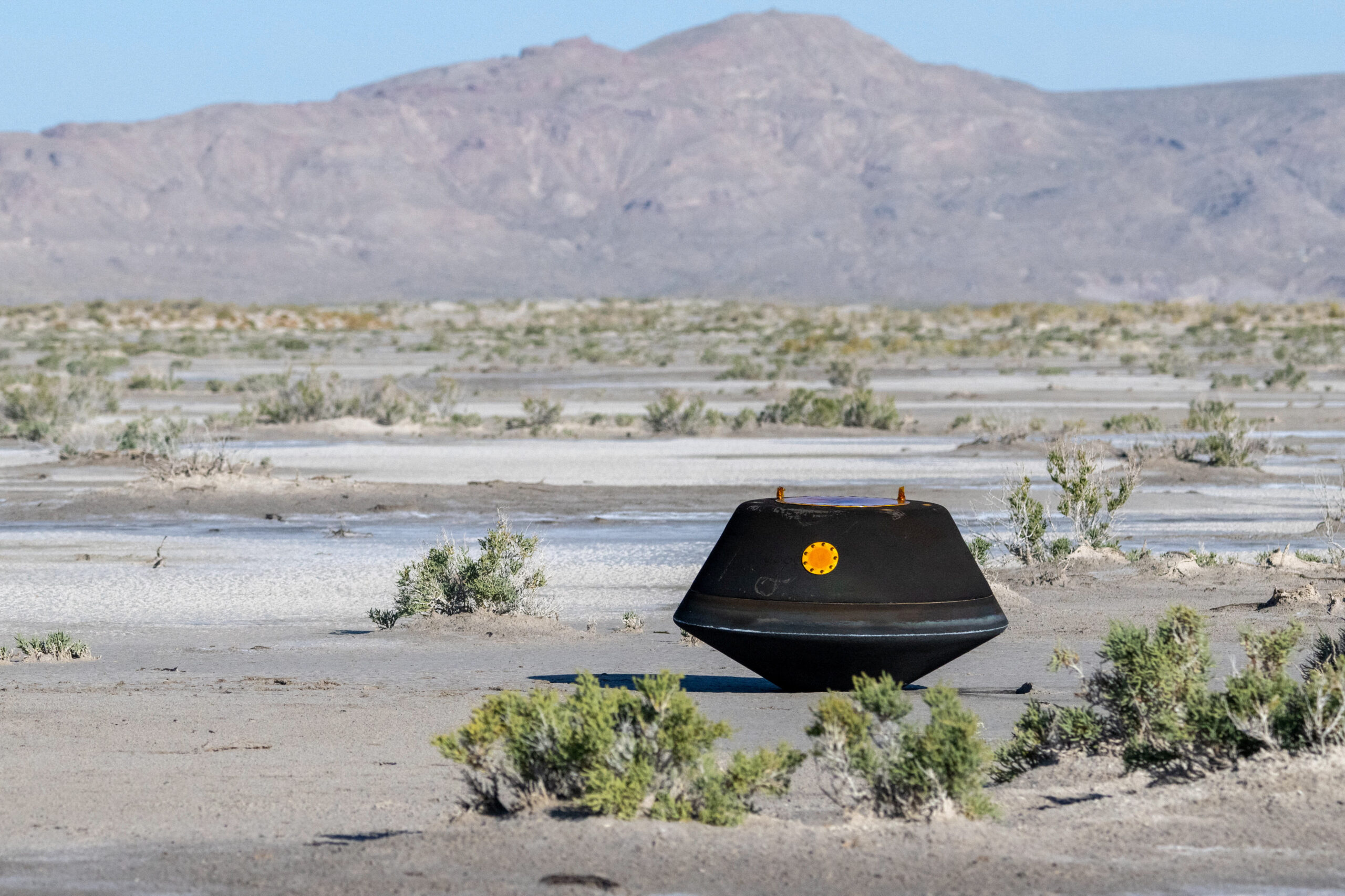NASA spacecraft transporting the most substantial asteroid soil sample ever gathered swiftly reentered Earth’s atmosphere before landing in the Utah desert, delivering the celestial specimen to researchers.
The gumdrop-shaped capsule, which had been launched from the robotic spacecraft OSIRIS-REx hours earlier when the mothership flew within 67,000 miles (107,826 km) of Earth, landed in a predetermined landing zone west of Salt Lake City on the huge Utah Test and Training Range of the US military. A six-year joint mission between NASA and the University of Arizona concluded with a live broadcast of the final descent and landing.

It was the third asteroid sample, and by far the largest, to be brought back to Earth for investigation after two missions of a similar nature by Japan’s space agency that ended in 2010 and 2020. A red-and-white parachute that had slowed the capsule’s swift descent after touchdown was now sitting a few feet distant on the sandy Utah desert bottom. The main chute unfolded as intended, bringing the capsule to a gentle and almost faultless landing after some uncertainty regarding the proper deployment of the preparatory chute. Scientist Dante Lauretta from the University of Arizona, who has worked on the project since the beginning and witnessed the descent from a helicopter, said at a press conference, “We heard the main chute was found,’ and I literally fell into tears.”

We “touched down as gently as a dove,” according to Tim Prizer, a Lockheed Martin engineer working on the project. Bennu is a tiny, carbon-rich asteroid that was discovered in 1999, and OSIRIS-REx first brought back a sample from it three years ago. The space rock is categorized as a “near-Earth object” since it travels relatively close to our planet every six years, notwithstanding the remote possibility of an impact. Bennu, which appears to be made out of a loose jumble of boulders, is only 500 meters (547 yards) across, making it narrower than the Empire State Building and far smaller than the Chicxulub asteroid, which slammed Earth 66 million years ago and wiped out the dinosaurs.

The asteroid Bennu is a remnant of the early solar system, like other asteroids. It provides important hints about the formation and evolution of rocky planets like Earth since its current chemistry and mineralogy have remained mostly unaltered since it formed around 4.5 billion years ago. It might even have organic molecules present that are similar to those required for the development of bacteria. Three years in the past, the Japanese spacecraft Hayabusa2 successfully collected samples from the asteroid Ryugu, which orbits relatively close to Earth. These samples were found to contain two organic compounds, suggesting that comets, asteroids, and meteorites that impacted early Earth may have delivered the essential building blocks for life.

In September 2016, OSIRIS-REx was launched, and by 2018, it had successfully reached Bennu. Following this, it spent nearly two years circling the asteroid from a distance before daringly moving closer to collect a sample of the loose surface material using its robotic arm on October 20, 2020. In May 2021, the spacecraft embarked on a return journey to Earth, covering a distance of 1.2 billion miles (1.9 billion km), which included two orbits around the sun. Approximately 13 minutes before landing, as it entered the upper atmosphere, the capsule heated up significantly, glowing red-hot, and the temperature on its heat shield soared to 5,000 degrees Fahrenheit (2,800°C). The collected sample from Bennu, weighing around 250 grams (8.8 ounces), is a significant improvement over the 5 grams from Ryugu in 2020 and the small specimen from asteroid Itokawa in 2010.

Scientists and technicians were waiting to retrieve the capsule and ensure the sample’s contamination-free preservation from the planet’s surface. The mysterious capsule and its priceless contents were transported by helicopter to a “clean room” at the Utah test range for initial inspection. On Monday, it will be flown aboard a military transport plane to NASA’s Johnson Space Centre in Houston. On Tuesday, the canister will be opened, and the samples will be divided into smaller portions, which will be distributed to about 200 scientists across 60 research facilities worldwide. The OSIRIS-REx spacecraft’s main body is anticipated to continue to examine Apophis, another near-Earth asteroid.


